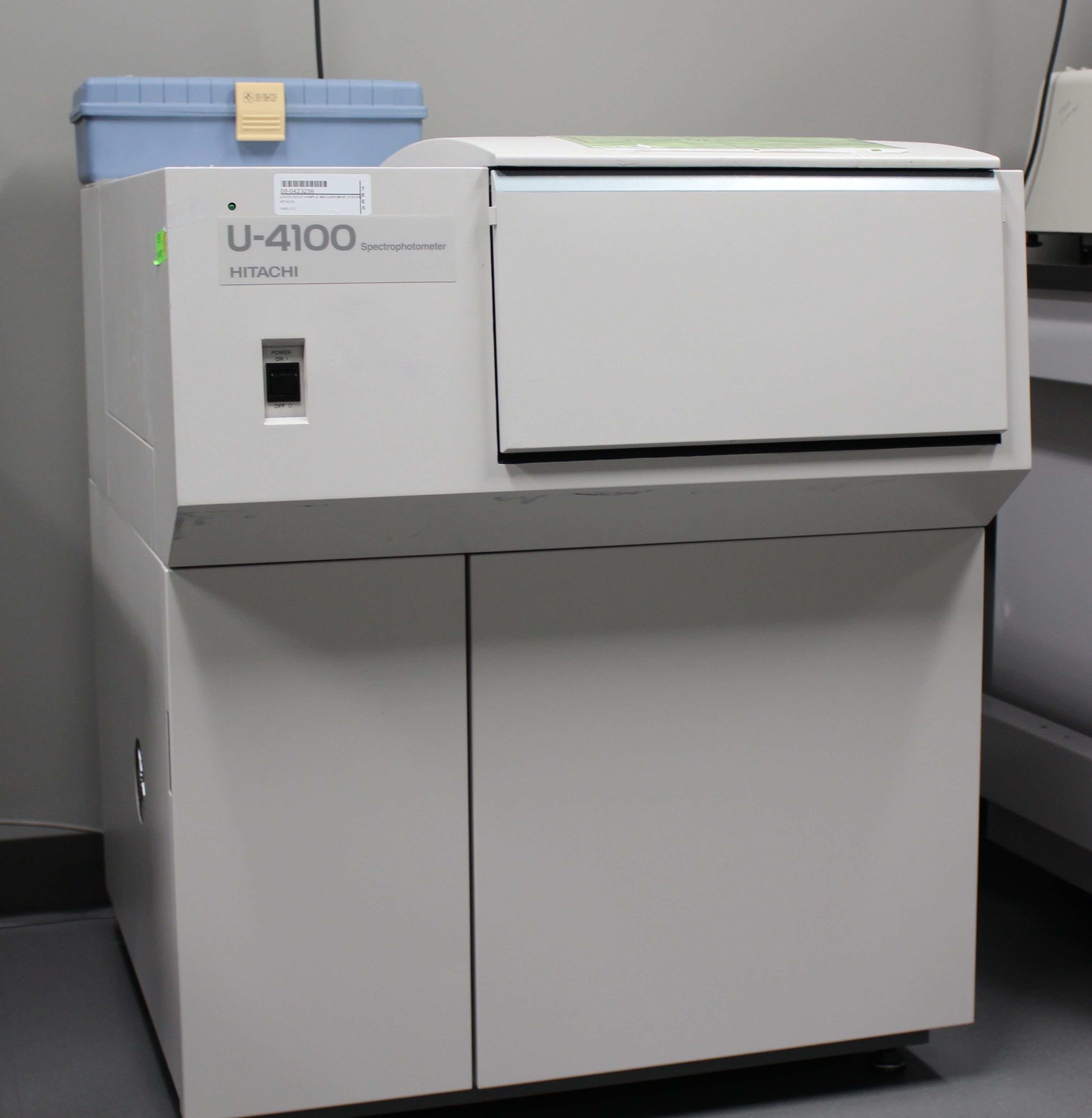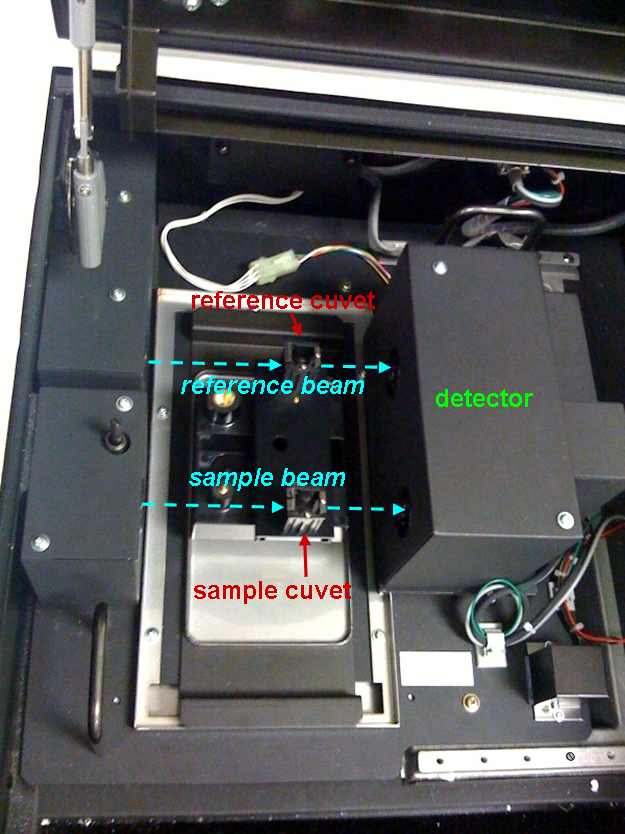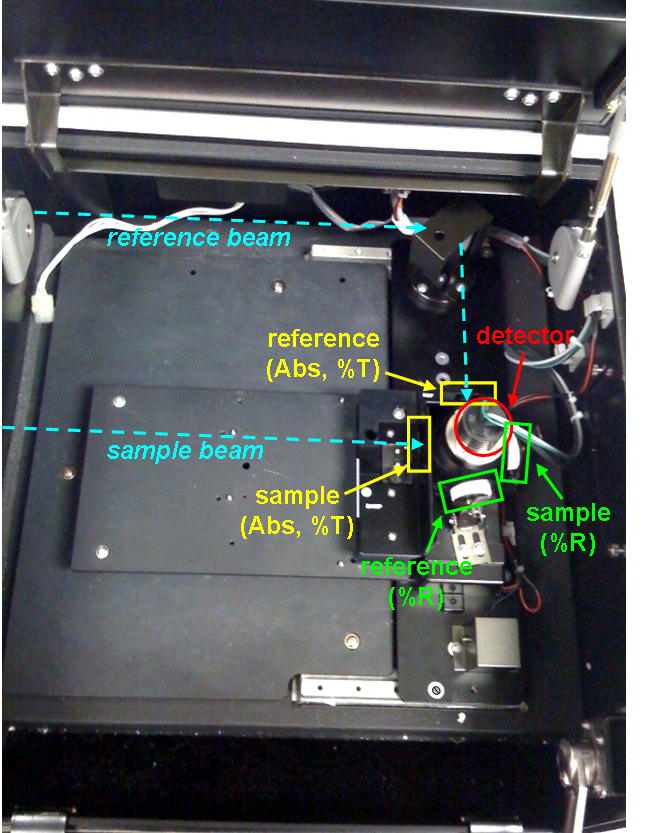
The Hitachi U-4100 UV-Vis-NIR spectrophotometer is a high resolution spectrometer capable of measuring absorbance, transmittance, and reflectance of both liquid and solid (film) samples from 175-3300 nm.
Key Features:
-
tungsten and deuterium lamps
-
liquid stage and solid stage (integrating sphere)
-
measures Abs, %T, %R, E(S), E(R)
-
175-3300 nm scan range
-
wavelength scan, time scan, photometry
-
high resolution
-
variable scan speed
To be trained on this instrument, please contact Dr. Jing Wu.

Liquid samples

Solid powder samples

Solid film samples
